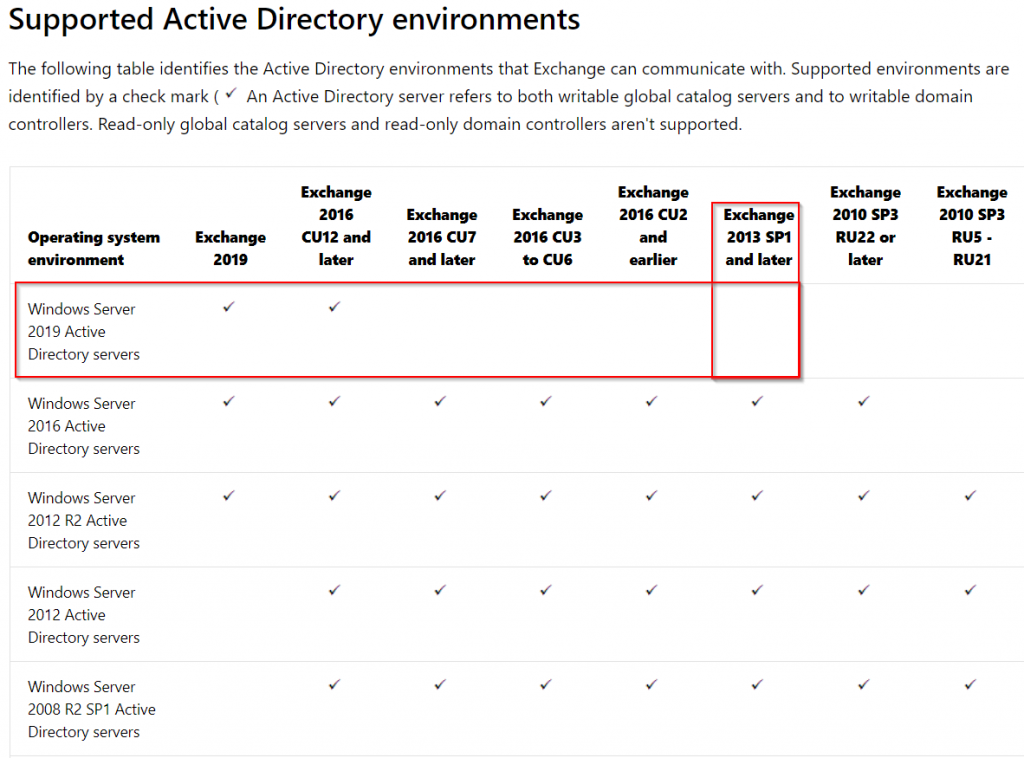Supported Active Directory environments for Microsoft Exchange
It is time for some words of wisdom, in regard to Exchange and the supported Active Directory environments. It is the same as with the supported. NET Framework releases: Latest release does not automatically mean “supported”.
To be honest: I nearly nuked a customer environment with ~ 300 users yesterday by preparing the domain for the first Windows Server 2019 Domain Controller.

Patrick Terlisten/ vcloudnine.de/ Creative Commons CC0
First things first: Everything is fine! I did not prepared to forest schema for Windows Server 2019.
The support for Windows Server 2008 R2 comes to an end and some customers are still running it. Like my customer yesterday. Some application servers are still on 2008 R2… and the Domain Controllers. The customer is also running Exchange 2013 on Windows Server 2012 R2.
The customer has decided to go to Windows Server 2019 wherever possible. This includes file servers, application servers, and the Domain Controllers. On of the first steps was the deployment of Active Directory-Based Activation. The AD schema needs to be prepared for this and I decided to prepare the schema for Windows Server 2019. I already copied the adprep folder from the Server 2019 ISO and openened a PowerShell. And then I paused. Something felt odd. I wanted to take a look at the Exchange Server supportability matrix.

Patrick Terlisten/ vcloudnine.de/ Creative Commons CC0
Exchange 2013 does NOT supported Windows Server 2019 Domain Controllers! Uhh… that was unexpected.
Lessons learned
Always check the Exchange Server supportability matrix. Always! Regardless if it’s because of .NET Framework, Active Directory, Outlook Clients etc. Just check it every time you plan to change something in your environment.
Especially in regard to Microsoft Exchange “newer” does not automatically mean “supported”. Most times the opposite is true.
